How to Prevent SQL Database Corruption?
SQL database corruption is a complex concept. Its occurrence depends on a variety of factors, both big and small. It is often random and sudden. You will never hear someone say that he anticipated the database to be corrupted on a particular day or time. That’s why DBA’s are advised to always be prepared for any level of corruption every time.
Almost everyone knows what causes corruption or how to try fixing the minor ones. But how to prevent SQL database corruption altogether or at least reduce its chances of happening, most users don’t really give it a thought.
So in this article, we will show you that by being a little proactive and choosing options with better preparation, one can actually deal with SQL server corruption beforehand.
Ways on How to Prevent SQL Database Corruption
The issue with corruption is that you won’t really know what’s going to hit you until it hits you. A true nightmare for any DBA. Your job, your company’s status, client’s relationship, all may get severely hampered if you weren’t prepared. And as they say, prevention is the best cure. So let’s get down to it and learn how to prevent SQL database corruption from happening:
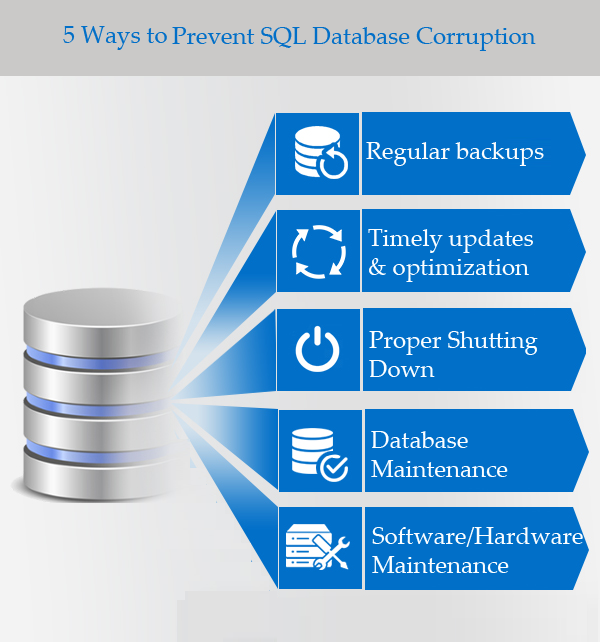
Regular Backups
One can’t emphasize enough on taking backups. No matter what kind of corruption, if you have a backup, you are protected against the severe effects of SQL server corruption. Because in the end, backups are pretty much the KEY to dealing with all forms of corruption whenever it happens. No need of going to forums and looking for solutions. Just restore the backup and save the bulk of your time. After all, in this day and age, time quite essentially is equivalent to money.
Timely Updates and Optimization
The universal way to maintain any application in healthy condition with maximum efficiency is to keep it updated. The same applies here too. If your SQL server is outdated, it also means that it is insecure and easier to exploit. So, keep yourself running without any hindrance with regular updates. These updates may fix any bugs and lag issues that could cause corruption in the future. Also, optimize your SQL database server at all times by validating data, changing passwords regularly, etc. This little effort, when done regularly, can prevent SQL Server database corruption in the long run.
Proper Shutting Down
Sudden shutdown of SQL Database Server is a major player in generating corruption issues such as header-level, page-level corruptions. It can occur due to power failure or unexpected closing of the server while operations were being performed. So, how to prevent SQL database corruption here? It can’t be simpler than this. Monitor the database server at all times and take steps to ensure graceful shutting down of the application such as having a power backup.
Database Maintenance
A simple yet relevant thing to look after is the size of your SQL database. In the beginning, it won’t be an issue. But after 2-3 or for argument sake 10 years, this size will just keep growing bigger and bigger. Hence, demanding larger disk space and taking a lot of downtime during backup. Bigger database means more data items, thus more complex and more prone to corruption than the smaller ones. So, it’s better to create multiple .ndf files along with the primary database file than to have everything in a single exceedingly large .mdf file. One more issue here is some users keep database files in compressed folders to conserve disk space. You need to understand that compressed volumes are not supported and can lead to database corruption as well. You can use data compression and backup compression firstly introduced in SQL Server 2008 for this purpose.
Software and Hardware Maintenance
The most common cause of database corruption is platform and hardware-related issues. For the platform part, a driver or bug can be the cause. For hardware issues, faults in disks, CPU, Controller, or Memory Module(s) could be the cause. There are cases when corruption is detected months later than it actually happened. For example-SQL Server was writing onto a disk and it suddenly became unresponsive. So, those pages became corrupt and only the time user tried to access those corrupt pages, it was detected. So, it’s basic stuff to constantly monitor your system for any software or hardware errors. Also, keep an eye out for any bugs, virus attacks or antivirus meddling with your database.
This sums up the ways on how to prevent SQL database corruption. All these methods may seem basic stuff to you. But forgetting about them or ignoring them is what leads to continuous SQL Server corruption issues. Proactive measures like these are surely effective in the long run.
What to Do If Corruption Still Occurs?
Preventive measures are good to avoid corruption but what if it still finds a way to your SQL Server database? In that case, would you go for DBCC CHECKDB? Which is effective ONLY for minor corruption and still holds a HIGH risk of data loss. Or rather choose one of the most trusted and expert solutions that are Software to save you from even the most horrid database corruption.
The software has made a name for itself with its long list of powerful features incorporated inside a simple, user-friendly interface. Some of which are as follows:
Steps to Follow to Recover Crucial SQL Database Components
- Install and Run SQL Database Recovery Software on your System. After that click on Open.
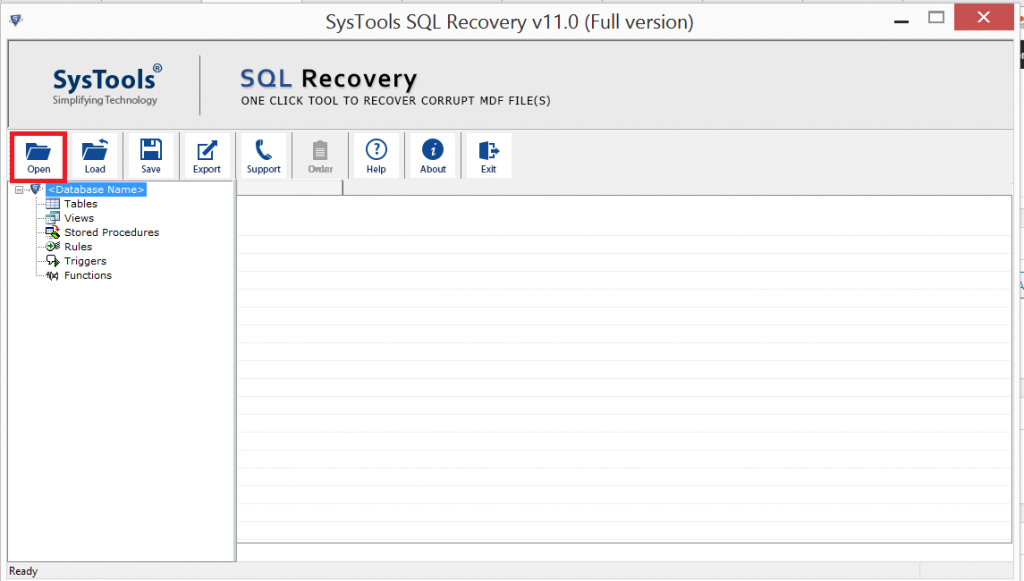
2. Now choose the Advanced Scan Option and select the SQL Server version. Also check the preview deleted records option.
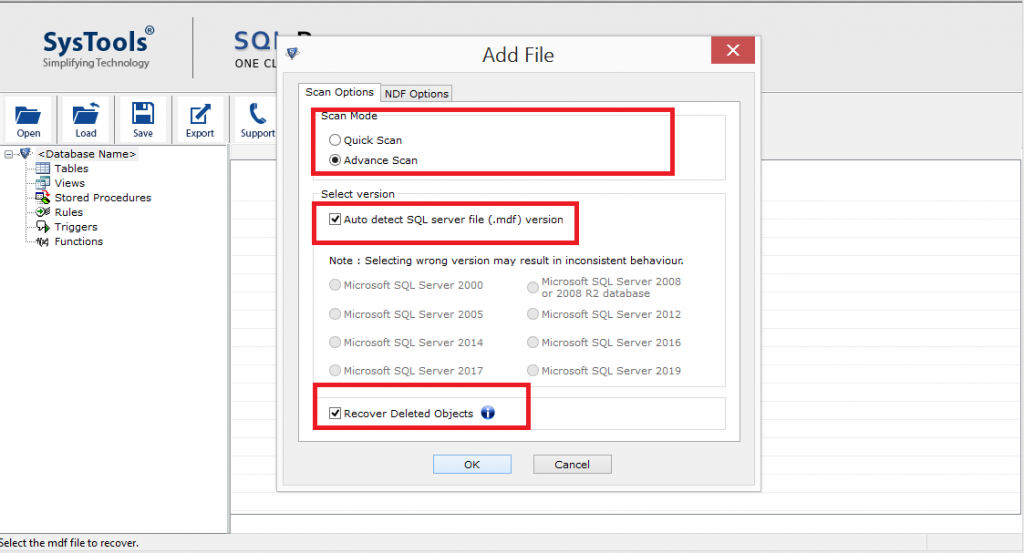
3. Preview the SQL database objects such as Table, Stored Procedure, Functions, Views, Triggers, etc.
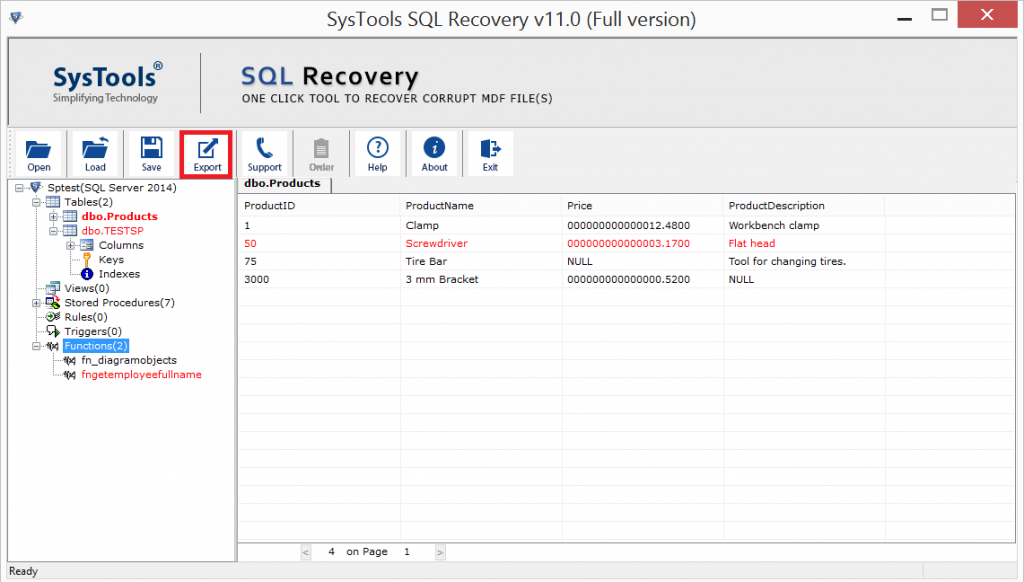
4. Click on the Export button to fill in the required details to Export the SQL Server database objects.
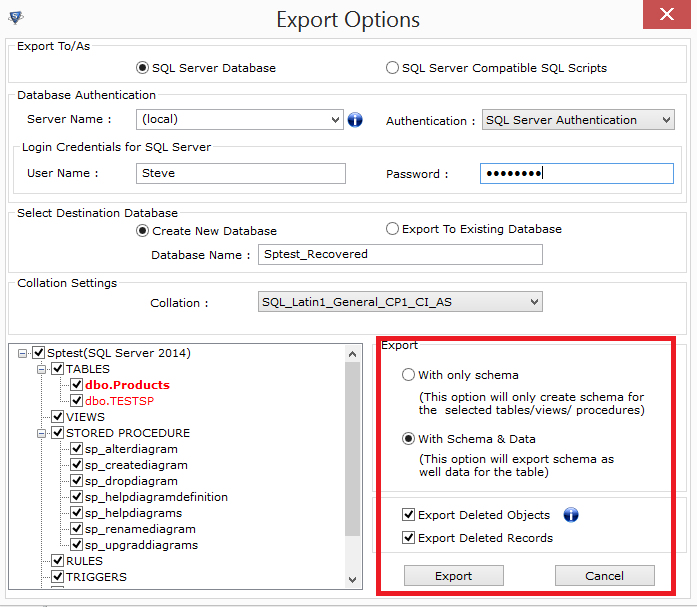
Conclusion
We discussed how to prevent SQL database corruption with some preemptive and proactive measures. This will help you in maintaining your database in a healthy and error-free state. However, in case you are already stuck with corruption, we also provided the best option there is.



